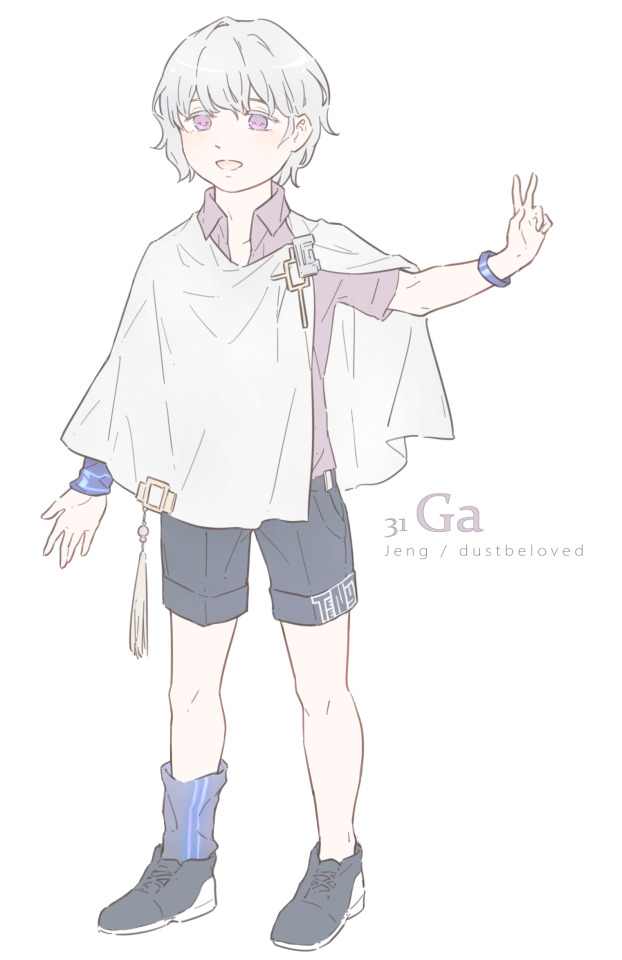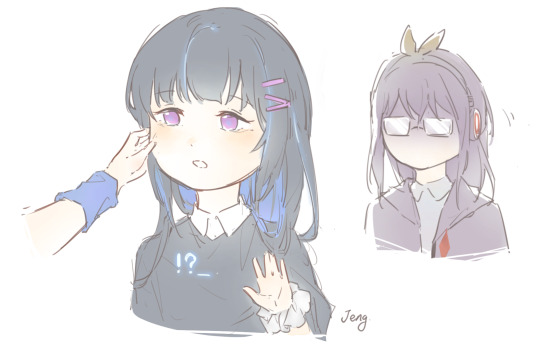#Indium tin oxide
Explore tagged Tumblr posts
Text

Multispectral smart window: A step toward healthier indoor environments
Windows, the vital conduits between indoor spaces and the external environment, also serve as primary entry points for harmful light waves and electromagnetic (EM) waves. However, managing light transmission and scattering typically requires different material systems and devices. Additionally, a critical aspect often overlooked in smart window technology is EM modulation. Therefore, windows capable of visible light regulation and EM shielding are becoming an urgent necessity. In a new paper titled "Multispectral smart window: Dynamic light modulation and electromagnetic microwave shielding," published in Light: Science & Applications, a team of scientists led by Professor Jiaqi Zhu from Infrared Films and Crystal introduces an innovative multispectral smart window capable of regulating visible light while simultaneously blocking microwave signals.
Read more.
#Materials Science#Science#Smart windows#Smart materials#Electronics#Liquid Crystals#Indium tin oxide
15 notes
·
View notes
Text
#gallium based liquid alloys#indium tin oxide#solder alloys#silver brazing alloys#lead alloys#tin alloys#radiation shielding products#radiation shielding material#tin sheet manufacturers#low melting point alloys#indium wire#indium sheet
1 note
·
View note
Text
Cybertronian Drinks and Food
So wanted to try and make a little interactive thing for y'all to send in as request. I'm sure you guys have seen this piece I've made for some of the Energon and Minerals the Transformers consume. Send in to my ask box

So I'm giving you guys the power to send in different things from this list to be made into energon drink art. Or edibles of a sort.
Energon and Fuels
Dark Energon
Synthetic Energon
Tox-En
Red Energon
engex
High grade
Energon wine
Energon Z
Natural Energon
Pure energon
Biofuel
super energon
Energon rod
EnerGULP
Diesel
unleaded petrol
95-octane
E10
E85 - flex-fuel
Jet A and Jet A1 Jet B
JET-A, JP5, JP8
LH2/LOX
RP-1/LOX
kerosene
LSFO
Oil
Minerals, Crystal's and Chemicals
Petroleum
Hydrogen
Copper
Aluminium
Titanium
Lead
Tin
Nickel
Gold
Zinc
Magnesium
Cobalt
Tungsten
Platinum
Chromium
Silver
Manganese
Sodium
Beryllium
Vanadium
Molybdenum
Palladium
Uranium
Zirconium
Bismuth
Cadmium
Mercury
Hafnium
Lanthanum
Niobium
Rhodium
Scandium
Tantalum
Yttrium
Cerium
Plutonium
Lithium
Neptunium
Meitnerium
Seaborgium
Dubnium
Francium
Gallium
Indium
Potassium
Rubidium
Strontium
Thallium
Barium
Calcium
Cesium
Calcite
Pyrite
Copper
Quartz
Benitoite
Diamond
Fluorite
Galena
Garnet
Gold
Oxide
Sulfides
Gypsum
Halite
Phosphates
Sulfates
Carbonates
Iron
__________
Let me know if you would like to be added to tag list (tagged for every fic)
Taglist
@angelxcvxc
@saturnhas82moons
@kgonbeiden
@murkyponds
@autobot79
@buddee
@bubblyjoonjoon
@chaihena
@pyreemo
@lovenotcomputed
@mskenway97
@delectableworm
@cheesecaketyrant
@ladyofnegativity
@desertrosesmetaldune
@stellasfallow
@coffee-or-hot-cocoa
@shinseiokami
@tea-loving-frog
@aquaioart
@daniel-meyer-03
@pupap123
@dannyaleksis
@averysillylittlefellow
@wosemoose1
#transformers#transformers idw#mtmte#transformers lost light#transformers prime#world building#transformers worldbuilding
284 notes
·
View notes
Text

Gallium [格林], Indium [茵迪] & Germanium [哲梅]
Team semiconductors! :P PS: Indium's heart emoticon is meant for Germanium.

Indium's cloak imitates translucent indium tin oxide, and she can control the patterns displayed on it. Theoretically she can put a short message on it (e.g. 摸鱼想下班[slacking, want to go home]), or send emoticons to her friends. That's Gallium's idea, btw!
She respects and admires Tin, who had gently guided and encouraged her. Being quiet and approachable, she gets along well with fellow semiconductors - Germanium finds her adorable. Though she's a little afraid of Arsenic, whose thoughts seem opaque to her.

Gallium has a creative, fun, and playful vibe. His cloak is decorated with 3D-printed trinkets, which he switches from time to time. He enjoys puns and cracks friendly jokes around his teammates.
Gallium sometimes messed up Aluminium work, e.g. they get carried away with video games the day before Aluminium's assignment deadline (!). Having Arsenic on the team appears to keep them on track...
"Teeny Ted from Turnip Town" is the world's smallest printed book at 0.07mm * 0.10mm. It's carved on single-crystalline silicon using focused-gallion-ion beam at 7nm.

5 notes
·
View notes
Text
0 notes
Text
0 notes
Text
0 notes
Text
0 notes
Text
Innovative Techniques for Enhancing ITO Coating Performance
Indium Tin Oxide (ITO coatings) have become indispensable in various applications, particularly in optical devices, touch screens, and solar cells. Their unique combination of electrical conductivity and optical transparency makes them a preferred choice for many optical component manufacturers. As technology advances, the demand for enhanced performance and durability of ITO coatings has led to innovative techniques aimed at improving their effectiveness.
One of the primary techniques is the optimization of the deposition process. Techniques such as sputtering and chemical vapor deposition (CVD) have been refined to produce higher-quality ITO coatings. By adjusting parameters like temperature, pressure, and gas composition during deposition, manufacturers can achieve coatings with better uniformity, lower resistivity, and enhanced optical properties. These modifications allow for thinner coatings without sacrificing performance, which is crucial in applications like touch screens, where high transparency and low electrical resistance are required.
Another innovative approach is the incorporation of nanostructures within ITO coatings. By embedding nanoparticles or creating nano-patterns on the surface, manufacturers can significantly improve light management properties. This technique enhances the optical performance by increasing light absorption in solar cells or improving the visibility of displays under various lighting conditions. Nanostructured ITO coatings also demonstrate increased durability and resistance to environmental factors, making them suitable for demanding applications.
Furthermore, advancements in surface modification techniques can lead to improved performance of ITO coatings. For instance, applying a secondary coating can enhance the chemical and mechanical stability of the primary ITO layer. Techniques such as plasma treatment or applying protective organic layers can prevent oxidation and degradation over time, thereby prolonging the lifespan of the ITO coatings. This is particularly beneficial for Optical Component Manufacturers aiming to deliver products that maintain performance over extended periods.
Additionally, the integration of ITO coatings with flexible substrates has opened up new avenues for innovation. Flexible electronics and displays require ITO coatings that not only offer excellent electrical properties but also can withstand bending and stretching. Researchers are exploring materials and processes that can create flexible ITO coatings while maintaining the desired performance characteristics, which could revolutionize the way electronic devices are designed and used.
HHV Advanced Technologies is at the forefront of these innovations, offering cutting-edge solutions for ITO coatings that meet the evolving needs of the industry. Their commitment to research and development ensures that they remain a leading optical component manufacturer, providing high-quality products that incorporate the latest advancements in coating technology.
In conclusion, the enhancement of ITO coatings performance relies on innovative techniques, including optimized deposition processes, nanostructure integration, surface modifications, and flexibility adaptations. As the demand for high-performance coatings grows, companies like HHV Advanced Technologies will continue to play a crucial role in pushing the boundaries of what is possible in the realm of ITO coatings. By embracing these innovations, the industry can ensure that the next generation of optical devices meets the rigorous demands of modern applications.
Contact Us
For more information, Visit: https://hhvadvancedtech.com/
Site No. 17, Phase 1, Peenya Industrial Area, Bengaluru – 560058, India
Phone: +91-80-66703700
Fax: +91-80-66703800
Email: [email protected]
0 notes
Text
0 notes
Photo

A cheaper and more flexible alternative to indium tin oxide
A team of chemists at Purdue University, working with a pair of colleagues from the University of Kentucky, has developed a way to make PBDF, a type of transparent conducting material, at an easily synthesized scale. In their paper published in Journal of the American Chemical Society, the group describes their new technique and possible applications.
Touch screens, such as those used on smartphones and tablet computers, are able to convey finger commands via a layer of electrically conductive film made of indium tin oxide (ITO). Such films are expensive to make, tend to be rigid and require the use of indium, a post-transition metal that can be toxic if consumed.
Since the introduction of its use in personal electronic devices, scientists have been looking for a substitute. One promising organic material is PBDF—it is stable in natural conditions and more electrically conductive than other organic clear conductors. It also can be printed onto surfaces, and bent and twisted without suffering damage. Its one main drawback has been the inability to synthesize it at scale and at a reasonable cost. In this new effort, the research team working in Indiana has found a way around this problem.
Read more.
#Materials Science#Science#Indium tin oxide#Electronics#Organic materials#Materials synthesis#Thin films
22 notes
·
View notes
Text
#pewter metals#white babbitt bearing metals#tin sheet manufacturers#high purity indium tin oxide#tin zinc wire#fusible alloys manufacturer#low melting point alloys#gallium based liquid alloys#cadmium sheet suppliers#radiation shielding products manufacturers#metal foils manufacturer#tin foil manufacturer#indium sheet#fusible alloys#Lead Alloys#radiation shielding products#silver brazing alloys#Solder Alloys#indium wire#indium tin oxide#radiation shielding material#thermal interface materials#lead alloys manufacturers
1 note
·
View note
Text
Global Nanocomposites Market Analysis, Trends, Development and Growth Opportunities by Forecast 2034

Nanocomposites Market Research, 2034
The Nanocomposites market is predicted to develop at a compound annual growth rate (CAGR) of 16.5% from 2024 to 2034, when it is projected to reach USD 18,493.53 Million in 2034, based on an average growth pattern. The market is estimated to reach a value of USD 5,638.47 Million in 2024.
A ductile alloy or metal matrix makes up metal matrix nanocomposites (MMNC). These materials combine the toughness and ductility of ceramics with the strength and modulus of metals. Therefore, MMNCs can be used to produce materials that need to have high strength in procedures involving shear or compression as well as high service temperature capabilities.
To learn more about this report, request a free sample copy
Nanocomposites Market Trends:
The development of transparent conductive films (TCF) using carbon nanotubes (CNT) is one of the well-known uses of these composites. Currently, indium tin oxide is utilized in the production of TCFs. The improved, inexpensive, and superior CNT-based transparent films will take the place of the conventional TCF thanks to recent technological advancements in CNT manufacturing. Arc discharge, chemical vapor deposition, and laser vaporization are three significant and improved commercial production techniques that are chosen over traditional synthesis techniques. These are less complicated and more straightforward ways to get premium CNT. Advanced techniques such as Combustion Chemical Vapor Deposition (CCVD) and Plasma Enhanced Chemical Vapor Deposition (PECVD) are frequently employed in the production of Single-Walled Carbon Nanotubes.
Nanocomposites market Segments
By Nanoparticles Type
Nanofiber
Carbon Nanotube
Graphene
Metal Oxide
Nanoclay
Others
By Matrix Material
Polymer
Metal
Ceramic
By Application
Automotive
Aerospace & Defense
Electronics & Semiconductor
Packaging
Energy
Medical & Healthcare
Others
Key Market Players
Arkema SA
BASF SE
Cabot Corporation
Elementis plc
Evonik Industries AG
Inframat Corporation
Nanocor Inc.
Showa Denko K.K.
3M Company
Zyvex Technologies
Other
Challenges and Opportunities in the Nanocomposites Market:
High Production Costs: The production of nanocomposites can be expensive, limiting their widespread adoption.
Regulatory Concerns: Ensuring the safe and responsible use of nanocomposites requires stringent regulations and standards.
Market Penetration: Expanding market penetration in emerging industries and regions presents opportunities for growth.
Applications of Nanocomposites Across Industries:
Automotive: Lightweight components, improved fuel efficiency, enhanced safety features
Aerospace: High-strength, heat-resistant materials for aircraft component
Electronics: Conductive materials for printed circuit boards, energy storage devices, and sensors
Construction: Durable, lightweight building materials with improved insulation properties
Healthcare: Medical devices, drug delivery systems, and tissue engineering
Nanocomposites Industry: Regional Analysis
North America Market Forecast
With over 38% of the global market share in 2023, North America is the market leader for nanocomposites. In terms of nanocomposites' invention, uptake, and research and development, the US and Canada are leaders in a number of areas, including aerospace, automotive, electronics, and healthcare. robust technological foundation, R&D expenditures, and the need for materials that are lightweight and highly effective.
Europe Market Statistics
Europe is a significant market for nanocomposites, driven by developments in industrial applications, strict environmental restrictions, and sustainability programs. Important contributors are the UK, France, and Germany. Pay attention to the development of the building and packaging industries, automobile lightweighting, and energy efficiency.
Frequently Asked Questions
What is the market size of Nanocomposites Market in 2024?
What is the growth rate for the Nanocomposites Market?
Which are the top companies operating within the market?
Which region dominates the Nanocomposites Market?
Nanocomposites Market Highlights:
Report Features
This is the most thorough study available for market intelligence. In order to maximize commercial value, the report structure has been maintained. Strategic decision making for both current and prospective market participants will be made possible by the crucial insights it offers into the dynamics of the industry. Here are the report's salient characteristics
Market structure: Overview, industry life cycle analysis, supply chain analysis
Market environment analysis: Growth drivers and constraints, Porter’s five forces analysis, SWOT analysis
Market trend and forecast analysis
Market segment trend and forecast
Competitive landscape and dynamics: Market share, application portfolio, application launches, etc.
Attractive market segments and associated growth opportunities
Emerging trends
Strategic growth opportunities for the existing and new players
Key success factors
Future Outlook for the Nanocomposites Market:
Technology breakthroughs, rising demand for high-performance materials, and rising awareness of the advantages of nanocomposites are expected to propel the market's significant rise globally. Nanocomposites are anticipated to have a significant impact on a number of industries as production prices decline and regulatory frameworks develop.
Conclusion:
Materials science could undergo a revolution thanks to nanocomposites, a game-changing breakthrough. Nanocomposites present a promising future because of their remarkable qualities and ability to tackle urgent issues. Keeping up with the current advancements in the industry and investigating the immense possibilities of this novel substance are crucial as it undergoes continuous changes.
0 notes
Text
Silver Nanowires: The Next Generation of Conducting Materials
Introduction to Silver nanofibers Silver nanofibers are extremely thin silver wires with diameters measuring only tens to hundreds of nanometers. At such a small scale, silver exhibits unusual optical, electrical and thermodynamic properties compared to bulk silver. Silver nanofibers have found use in applications requiring transparent conducting materials like touchscreens. Properties of Silver nanofibers Silver nanofibers conduct electricity exceptionally well due to the high electrical conductivity of bulk silver. The electrical resistivity of silver is only about 1.59×10−8 Ω·m, second only to copper. At the nanoscale, Silver nanofibers retain much of this high conductivity despite their small cross-sectional area. Additionally, long nanowires allow percolation or contact between nanowires to form conductive networks even at low surface coverage or mass fractions. This makes Silver nanofibers viable at transmitting electricity through transparent materials. Optical properties are also influenced at the nanoscale. Silver Nanowires is highly reflective in the visible spectrum as a bulk material. However, Silver nanofibers only weakly absorb and scatter visible light due to resonance effects dependent on nanowire diameter, reducing opacity. Transmission of visible light can exceed 90% with Silver nanofibers films only tens of nanometers thick. The nanowires also transmit infrared radiation well. These qualities give Silver nanofibers their useful optoelectronic properties. Producing High Quality Silver Nanowires Several techniques exist for producing high quality Silver nanofibers on an industrial scale. Polyol synthesis is a common method which uses ethylene glycol both as a reducing agent and reaction solvent. In this process, silver nitrate is reduced by ethylene glycol at elevated temperatures (150-200°C) in the presence of a structure-directing agent like polyvinylpyrrolidone (PVP). The PVP bonds preferentially to certain crystallographic faces of growing silver nanoparticles, directing their one-dimensional growth into nanowires. Reaction time, temperature, and concentration of reagents control the dimensions of synthesized nanowires, which are usually 50-200 nm in diameter and 5-100 μm in length. Post-synthesis processing like washing and drying yields pure Silver nanofibers powders. PVP-coated Silver nanofibers produced by polyol synthesis typically have good aspect ratios above 100 and acceptable electrical conductivities. However, surfactants and byproducts must be removed before application to avoid compromising transparency or conductivity. Additional techniques like electrospinning can also fabricate Silver nanofibers, enabling mass production. Overall, wet chemistry methods allow cost-effective synthesis of high quality Silver Nanowires nanofibers materials. Uses of Silver nanofibers in Devices Transparent Conductive Films One major application of Silver nanofibers is as a material for transparent conductive films (TCFs). TCFs require optical transparency as well as high electrical conductivity, which bulk metals cannot provide. Silver nanofibers combine these properties, transmitting over 90% of visible light while achieving conductivities within an order of magnitude of ITO. Silver nanowire TCFs have begun replacing indium tin oxide (ITO) in applications like touchscreens due to lowered costs and mechanical flexibility. At optimized surface densities, Silver nanofibers form a percolated conductive mesh that maintains excellent optical qualities even as electrical conductivity surpasses that of ITO. This makes them promising for next-generation touch-enabled displays and transparent electrodes. Organic Electronics and Solar Cells
Get more insights on Silver Nanowires
Vaagisha brings over three years of expertise as a content editor in the market research domain. Originally a creative writer, she discovered her passion for editing, combining her flair for writing with a meticulous eye for detail. Her ability to craft and refine compelling content makes her an invaluable asset in delivering polished and engaging write-ups.
(LinkedIn: https://www.linkedin.com/in/vaagisha-singh-8080b91)

0 notes
Text
Why Do People Rely On Membrane Switch Keypad?
Membrane switches are electrical switches that operate as touchscreens and can turn circuits on or off. They establish a clear link between the operators of devices and electronic appliances.
Gain an improved understanding
How are membrane switches different from mechanical switches? Their point of difference lies in form. The former involves an electrical circuit printed on polyethylene terephthalate or indium tin oxide with copper or graphite ink. The latter comprise metal or plastic parts. Membrane Switch Keypad is a popular choice for medical appliances.
Various advantages
These devices are durable and easy to maintain. Avail of top quality Membrane Switch Button at a cost-effective rate through online stores.
On a concluding note
You may get in touch with customer care executives of a renowned supplier to learn how membrane switches can be beneficial for your business.
0 notes